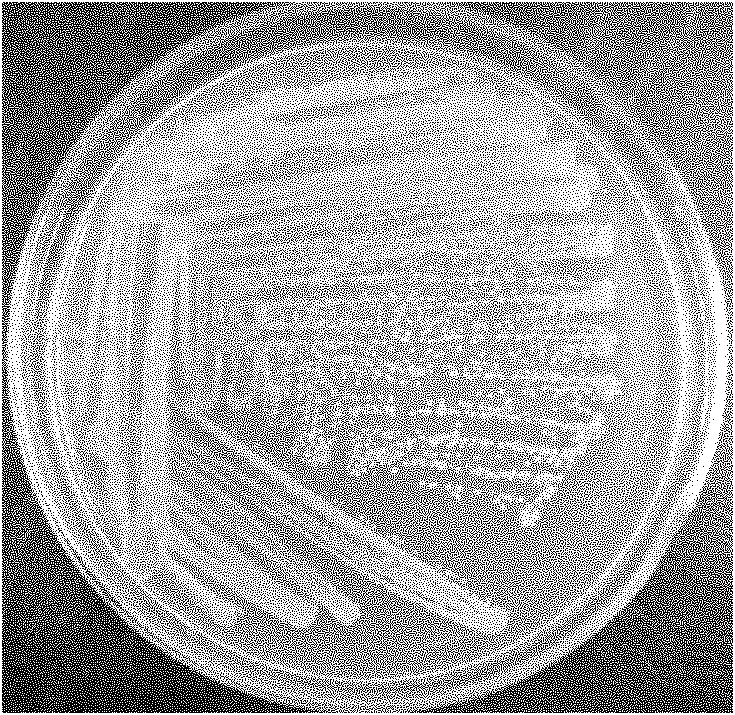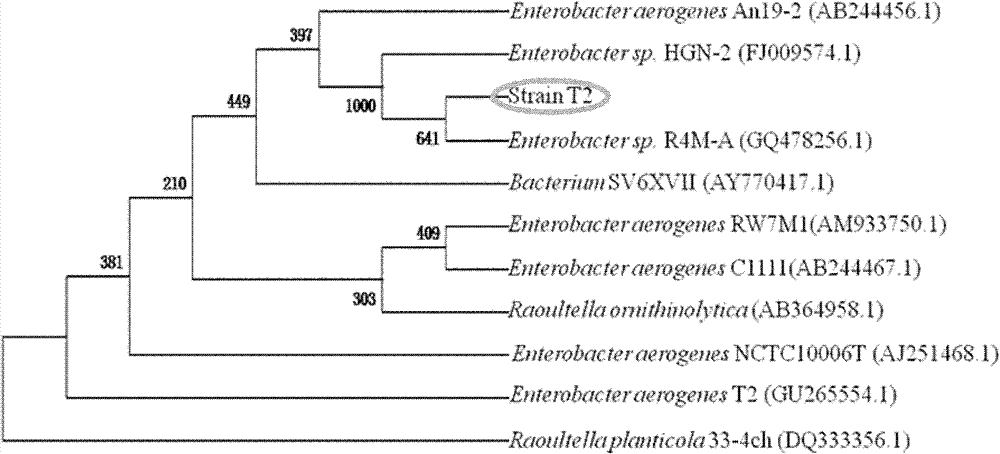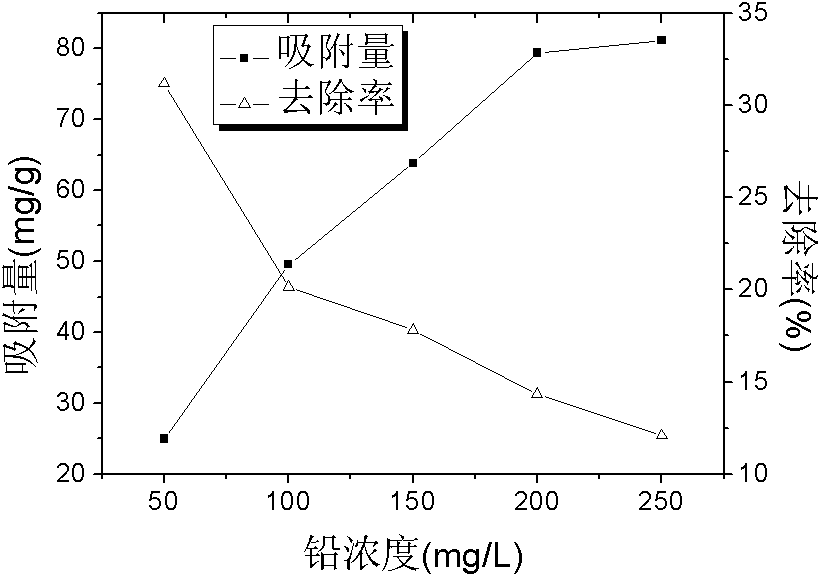Heavy metal-tolerant bacterial strain and application thereof
A heavy metal and tolerance technology, applied in the direction of bacteria, water pollutants, water/sludge/sewage treatment, etc., can solve the problem of less bacteria and achieve the effect of strong vitality, wide adaptability and fast growth speed
- Summary
- Abstract
- Description
- Claims
- Application Information
AI Technical Summary
Problems solved by technology
Method used
Image
Examples
Embodiment 1
[0033] Example 1: Strain morphological characteristics and biological identification
[0034] 1. Morphological characteristics
[0035] Streak a single colony into the LB solid medium, place the plate upside down in a constant temperature incubator, culture at 30°C for 1 to 3 days, and observe the colony morphology. Enterobacter sp.T2 round spot, khaki, moist surface, no diffusion, see figure 1 .
[0036] 2. Physiological and biochemical characteristics
[0037] Gram stain, oxidase test, contact enzyme test, bacterial motility test, oxidative fermentation test of sugar alcohols (including glucose, lactose, galactose, fructose, xylose, sucrose, maltose, mannitol), utilization of sugar Alcohol gas production test, methyl red test, VP test, indole test, nitrate reduction test, H 2 S production test, arginine dihydrolase test, citrate utilization test, urease test, starch hydrolysis, litmus milk test, gelatin liquefaction test, the results are shown in Table 1.
[0038] Table 1 Physiologi...
Embodiment 2
[0042] Example 2: The maximum tolerance concentration of bacteria to heavy metals
[0043] The solid medium containing heavy metal ions was prepared separately, with the concentration starting from 0.1 mM / L and increasing by 0.5 mM. Streak and inoculate on fresh LB solid medium, culture for 48h at 30℃ for activation, pick a single colony to inoculate into LB liquid medium, culture with shaking at 30℃, 120r / min for 24h, collect bacterial concentration OD 600 For the bacterial solution of 1.5, press 10 0 , 10 -1 , 10 -2 , 10 -3 , 10 -4 , 10 -5 Proportional dilution, respectively dipping in each concentration of bacterial liquid spot inoculation on the heavy metal solid medium. Cultivate at 30°C and observe and record the growth of bacteria every 24h. The minimum heavy metal concentration that inhibits its obvious growth within 120h is the maximum tolerable concentration of the bacteria. See Table 2.
[0044] Table 2 Statistical table of the strain tolerance concentration of the prese...
Embodiment 3
[0046] Example 3: Adsorption effect of adsorbent on lead
[0047] In the solutions with lead concentrations of 20, 50, 100, 150, and 200 mg / L and pH of 6, add the adsorbent prepared by the bacteria of the present invention that has been cultured for 12 hours and the dosage is 0.5 g / L. Adsorb for 90 minutes at 30°C, collect the supernatant by centrifugation, and determine the remaining lead ion concentration during adsorption equilibrium. With Pb 2+ Increase of initial mass concentration, Pb 2+ The removal rate decreases, and the equilibrium adsorption capacity increases, but the increase in adsorption capacity is getting smaller and smaller. The maximum adsorption capacity of the biosorbent can reach 81.22mg / g, see image 3 Shown.
PUM
| Property | Measurement | Unit |
|---|---|---|
| adsorption capacity | aaaaa | aaaaa |
Abstract
Description
Claims
Application Information
 Login to View More
Login to View More - R&D
- Intellectual Property
- Life Sciences
- Materials
- Tech Scout
- Unparalleled Data Quality
- Higher Quality Content
- 60% Fewer Hallucinations
Browse by: Latest US Patents, China's latest patents, Technical Efficacy Thesaurus, Application Domain, Technology Topic, Popular Technical Reports.
© 2025 PatSnap. All rights reserved.Legal|Privacy policy|Modern Slavery Act Transparency Statement|Sitemap|About US| Contact US: help@patsnap.com



